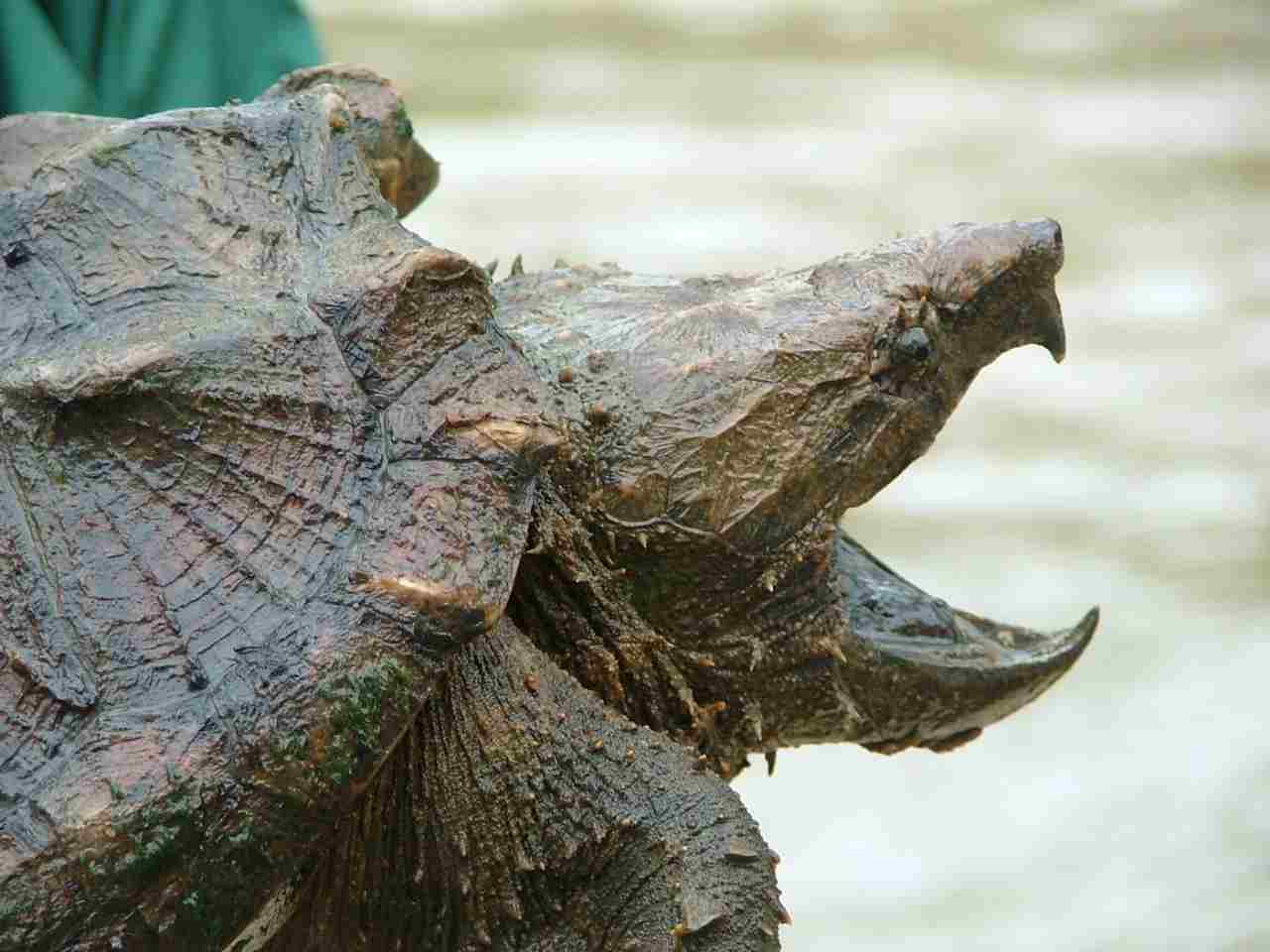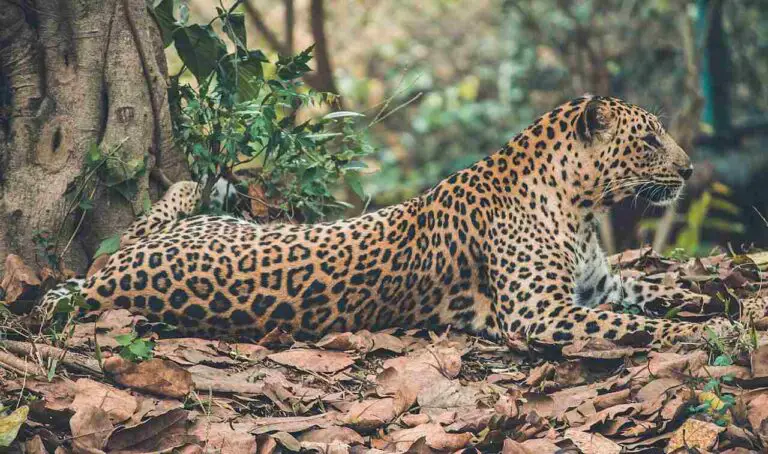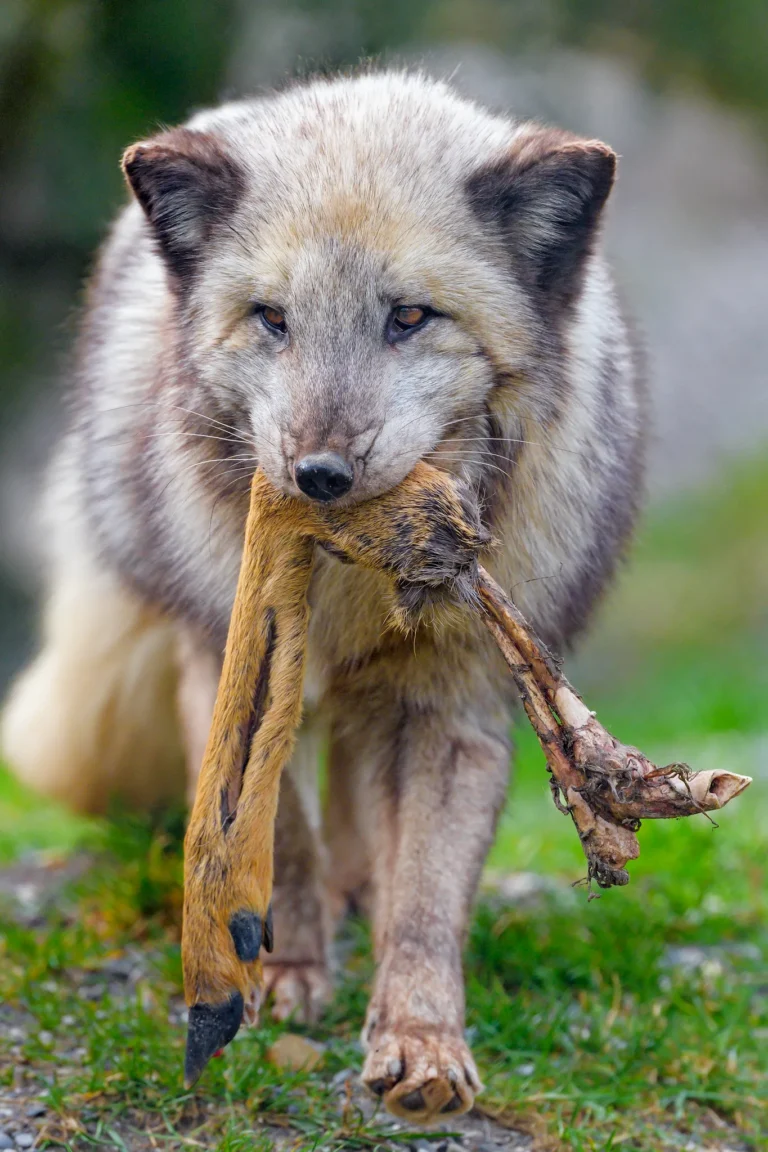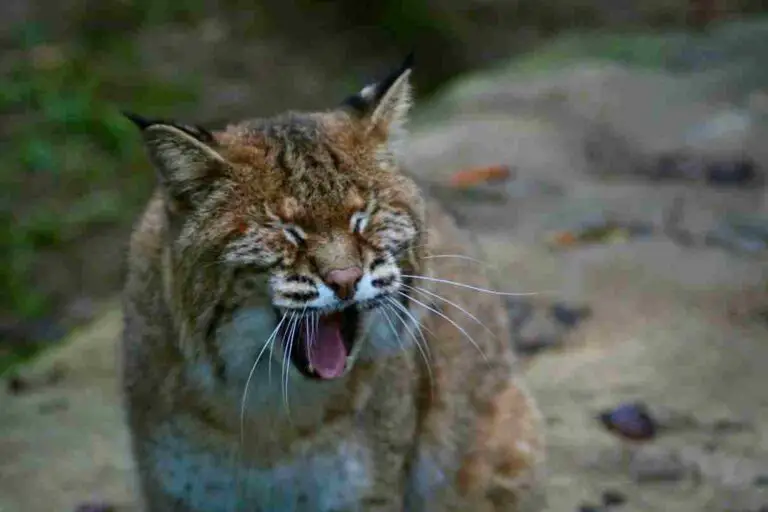23+ Dangerous Animals In Illinois And Their Characteristics
1. Timber Rattlesnake
The Timber Rattlesnake (Crotalus horridus) is one of the most venomous snakes found in Illinois, typically inhabiting forested areas, rocky hillsides, and dense woodlands. Characterized by its distinct rattle at the end of its tail, this snake uses its venom to immobilize and digest prey, posing a significant risk to humans if provoked or threatened. Its venom contains a potent mix of hemotoxins, which can cause severe tissue damage, pain, swelling, and in extreme cases, life-threatening complications. While Timber Rattlesnakes generally avoid human contact, caution should be exercised when venturing into their habitats, particularly in the southern and western regions of Illinois, where they are most commonly found. If encountered, it is best to maintain a safe distance and seek professional help for removal or relocation.
2. Eastern Massasauga Rattlesnake
The Eastern Massasauga Rattlesnake (Sistrurus catenatus) is another venomous snake species native to Illinois, primarily dwelling in wetlands, marshes, and grassy meadows. Despite its venomous nature, this rattlesnake species is typically shy and reclusive, preferring to avoid human interaction. However, its venom can cause significant harm if bitten, leading to symptoms such as swelling, pain, and potentially life-threatening complications. Due to habitat loss and fragmentation, Eastern Massasauga Rattlesnake populations in Illinois are declining, making encounters less common but emphasizing the importance of conservation efforts to protect this species and its habitat.
3. Copperhead Snake
The Copperhead Snake (Agkistrodon contortrix) is a venomous pit viper found in Illinois, often inhabiting wooded areas, rocky outcrops, and streamsides. Recognizable by its distinct copper-colored head and hourglass-shaped markings on its body, the Copperhead is known for its camouflaging ability, making it sometimes challenging to spot in its natural habitat. While its venom is less potent compared to other venomous snakes, a bite from a Copperhead can still result in swelling, pain, and tissue damage. Encounters with Copperheads are relatively rare, but caution should be exercised when exploring their habitats, particularly during warmer months when they are most active. If bitten, prompt medical attention is crucial to minimize the risk of complications.
4. Cottonmouth Snake
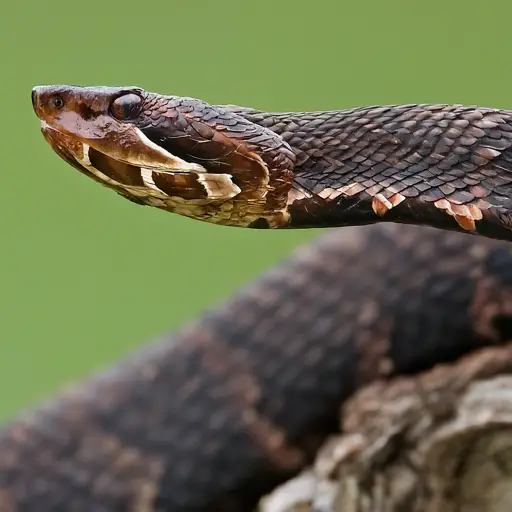
The Cottonmouth Snake (Agkistrodon piscivorus) is a venomous pit viper, also known as the water moccasin, found in Illinois primarily in aquatic habitats such as swamps, marshes, and slow-moving streams. Recognizable by its dark coloration and white mouth, which it displays when feeling threatened, the Cottonmouth is a formidable predator capable of delivering a potent venomous bite. While typically shy and defensive, encounters with humans can occur, especially in areas where their habitats overlap. A bite from a Cottonmouth can cause severe tissue damage, pain, and in rare cases, life-threatening complications. Caution should be exercised when navigating waterways or wetland areas where Cottonmouths may be present, and immediate medical attention should be sought if bitten.
5. Black Widow Spider
The Black Widow Spider (Latrodectus spp.) is one of the most infamous arachnids found in Illinois, known for its shiny black body and distinctive red hourglass marking on its abdomen. Typically inhabiting dark and sheltered areas such as woodpiles, sheds, and outdoor structures, Black Widows are venomous spiders capable of delivering a potent neurotoxic venom through their bites. While encounters with Black Widows are relatively uncommon, their venom can cause severe symptoms in humans, including intense pain, muscle cramps, nausea, and in rare cases, respiratory distress. Due to their reclusive nature, prevention is key to avoiding encounters, such as wearing gloves when working in areas where Black Widows may reside and thoroughly inspecting outdoor equipment and storage spaces.
6. Brown Recluse Spider
The Brown Recluse Spider (Loxosceles reclusa) is another venomous spider species found in Illinois, distinguished by its violin-shaped marking on its cephalothorax. Typically dwelling in dark and undisturbed areas such as basements, closets, and attics, Brown Recluses are known for their secretive behavior, preferring to avoid human contact. However, accidental encounters can occur, especially when disturbing their habitats. Brown Recluse venom contains potent cytotoxic compounds that can cause necrosis and tissue damage at the site of the bite, often resulting in a slow-healing ulcer. While bites are rare, caution should be exercised when handling stored items or debris in areas where Brown Recluses may be present, and prompt medical attention sought if bitten.
7. American Black Bear
The American Black Bear (Ursus americanus) is a large mammal occasionally found in Illinois, primarily in heavily forested areas. While generally shy and more interested in foraging for food, black bears can be dangerous if they feel threatened or if they are protecting their young. Their size and strength make them capable of causing significant harm if provoked, and human encounters are rare but possible, especially in areas with abundant food sources. If you encounter a black bear, it is recommended to remain calm, make noise to assert your presence, and avoid running or turning your back to the bear.
8. Coyote
Coyotes (Canis latrans) are common in Illinois, inhabiting a wide range of environments from rural to urban areas. Known for their adaptability and intelligence, coyotes typically avoid humans, but they can pose a threat to pets and occasionally to people if they feel cornered or if they are protecting their territory. Coyotes are opportunistic feeders and may scavenge in residential areas, leading to potential conflicts with humans. To avoid encounters, it is advisable to secure garbage, keep pets indoors at night, and maintain a safe distance if a coyote is spotted.
9. Bobcat
The Bobcat (Lynx rufus) is a medium-sized wildcat found in Illinois, typically residing in wooded areas and prairies. Although they are generally elusive and avoid human contact, bobcats can be dangerous if they feel threatened or if they are protecting their territory. They are skilled hunters and possess sharp claws and teeth, which can cause serious injury if provoked. Encounters with bobcats are rare, but they can happen in areas with dense vegetation or where bobcats are known to hunt. It is best to maintain a safe distance and avoid attempting to interact with or feed these wildcats.
10. Mountain Lion (Cougar)
The Mountain Lion (Puma concolor), also known as a cougar, is a large wildcat occasionally sighted in Illinois, typically in remote areas and dense forests. These big cats are apex predators and can be dangerous if they feel threatened or are hunting for food. Mountain lions are capable of traveling long distances, and while sightings in Illinois are rare, they are increasing due to population movements. To stay safe in areas where mountain lions might be present, it is recommended to travel in groups, make noise to alert them of your presence, and avoid running or turning your back if you encounter one.
11. Great Horned Owl
The Great Horned Owl (Bubo virginianus) is a large bird of prey found in Illinois, recognizable by its prominent ear tufts and intense gaze. These owls are generally not dangerous to humans, but they are powerful predators with strong talons and sharp beaks, capable of causing injury if they feel threatened or if they are defending their nests. Great Horned Owls are most active at night and can be found in forests, grasslands, and suburban areas. If encountered, it is best to give them space and avoid disturbing their nests or young.
12. Bald Eagle
The Bald Eagle (Haliaeetus leucocephalus) is the national bird and symbol of the United States, found in various parts of Illinois, particularly near large bodies of water where they hunt for fish. Although majestic and generally not aggressive toward humans, bald eagles have sharp talons and strong beaks, which can be dangerous if they feel threatened or if their nests are disturbed. Encounters with bald eagles are usually harmless, but it is important to respect their space and avoid activities that could disrupt their habitat, such as flying drones or disturbing nesting sites.
13. Red-Tailed Hawk
The Red-Tailed Hawk (Buteo jamaicensis) is a common bird of prey in Illinois, often seen soaring above open fields and perching on utility poles. While they are not typically aggressive toward humans, red-tailed hawks have sharp talons and beaks that can cause injury if they feel threatened or if their nests are disturbed. These hawks are known to be territorial during the breeding season and may swoop down if they perceive a threat to their nests. It is advisable to give them space and avoid approaching nesting sites to prevent potential encounters.
14. Common Snapping Turtle
The Common Snapping Turtle (Chelydra serpentina) is a large freshwater turtle found in Illinois, typically in ponds, lakes, and slow-moving streams. Despite their slow pace on land, snapping turtles can be aggressive when threatened, and their powerful jaws can cause significant injury if they bite. They are most dangerous during the breeding season when females lay eggs on land, and they may snap at anyone who comes too close. It is recommended to maintain a safe distance from snapping turtles and avoid attempting to handle them.
15. Alligator Snapping Turtle
The Alligator Snapping Turtle (Macrochelys temminckii) is one of the largest freshwater turtles, found occasionally in Illinois waterways. With a prehistoric appearance, these turtles have powerful jaws and can deliver a dangerous bite if provoked. They are usually docile but can be aggressive when defending their territory or if they feel threatened. Alligator snapping turtles are primarily aquatic, so encounters are more likely near bodies of water. It is best to avoid attempting to handle these turtles and to exercise caution when fishing or boating in areas where they may be present.
16. American Bison
The American Bison (Bison bison) is the largest land mammal in North America, once roaming freely across Illinois but now found in limited populations due to conservation efforts. Although they are typically calm and herbivorous, bison can be extremely dangerous if provoked or if they feel threatened. Their massive size and strength make them capable of causing severe injury or death if they charge. Encounters with bison should be approached with caution, maintaining a safe distance, and avoiding sudden movements or loud noises that could startle them.
17. White-tailed Deer (during rutting season)
The White-tailed Deer (Odocoileus virginianus) is a common mammal in Illinois, widely found in forests and grasslands. Generally harmless to humans, they can become aggressive during rutting season (mating season), especially bucks defending their territory or competing for mates. During this time, deer may charge at humans or other animals, leading to potential injury. To stay safe, it is advisable to keep a safe distance from deer during rutting season and avoid areas where they are known to congregate in large numbers.
18. American Mink
The American Mink (Neovison vison) is a small carnivorous mammal found in Illinois, typically near rivers and streams. Although they are not typically aggressive toward humans, minks can be dangerous if cornered or if they feel threatened. They have sharp teeth and are known to be highly territorial, especially when protecting their dens. Encounters with American Minks are rare, but it is advisable to maintain a safe distance and avoid disturbing their habitats to prevent aggressive behavior.
19. Fisher
The Fisher (Pekania pennanti) is a medium-sized carnivorous mammal found in Illinois, usually in forested areas. Known for their agility and aggressive hunting behavior, fishers are capable of defending themselves with sharp claws and teeth. Although they generally avoid human contact, they can be dangerous if cornered or if they feel threatened. Fishers are also known for their predatory nature, preying on small mammals and birds. To avoid potential encounters, it is best to keep a safe distance and refrain from approaching areas where they are known to reside.
20. Raccoon (rabid)
Raccoons (Procyon lotor) are common mammals in Illinois, often seen in urban and suburban areas. While generally harmless, raccoons can become extremely dangerous if they contract rabies. Rabid raccoons exhibit erratic behavior, aggression, and loss of coordination, posing a significant risk to humans and pets. To prevent encounters with rabid raccoons, it is essential to secure garbage, avoid feeding wildlife, and contact animal control if an aggressive raccoon is spotted. If bitten by a raccoon, immediate medical attention is required due to the risk of rabies transmission.
21. Striped Skunk
The Striped Skunk (Mephitis mephitis) is a small mammal commonly found in Illinois, recognizable by its distinctive black and white fur and its ability to spray a foul-smelling liquid when threatened. Although skunks are generally harmless, they can become dangerous if they feel threatened, especially if they carry rabies. If startled or cornered, a skunk may spray as a defense mechanism, which can cause temporary blindness and intense irritation. To avoid encounters, it is best to keep a safe distance, avoid sudden movements, and ensure garbage and food sources are secured.
22. Red Fox
The Red Fox (Vulpes vulpes) is a common mammal in Illinois, often found in rural and suburban areas. Although they are typically shy and avoid human contact, red foxes can be dangerous if they feel threatened or if they contract rabies. These agile predators have sharp teeth and are known for their cunning behavior, making them capable of causing harm if provoked. To prevent encounters with red foxes, it is advisable to secure garbage, avoid feeding wildlife, and maintain a safe distance if a fox is spotted.
23. Gray Fox
The Gray Fox (Urocyon cinereoargenteus) is another fox species found in Illinois, usually in forested areas. Like the red fox, the gray fox is generally shy and avoids human contact, but it can become dangerous if it feels threatened or if it contracts rabies. With sharp teeth and agile movements, gray foxes are skilled predators capable of causing harm if provoked. Encounters with gray foxes are rare, but it is advisable to keep a safe distance and avoid approaching them, especially if they display erratic behavior.
24. Eastern Red Bat
The Eastern Red Bat (Lasiurus borealis) is a small bat species found in Illinois, often seen flying at dusk or dawn. Although they are generally harmless to humans, bats can become dangerous if they contract rabies or if they are disturbed in their roosts. Rabid bats may exhibit erratic behavior, and their bites can transmit the rabies virus to humans. To avoid potential encounters with bats, it is best to keep a safe distance, avoid disturbing bat roosts, and contact wildlife control if a bat is found indoors or behaving unusually.
| Animal | Key Information |
| Timber Rattlesnake |
Venomous snake, lives in forests and rocky areas, poses a risk if provoked, with potent hemotoxins in venom.
|
| Eastern Massasauga Rattlesnake |
Venomous snake, primarily in wetlands, generally shy but venomous with serious symptoms if bitten.
|
| Copperhead Snake |
Venomous snake, found in wooded areas, identifiable by its copper-colored head, bites can cause tissue damage.
|
| Cottonmouth Snake |
Venomous snake, lives near water, has potent venom, shows aggression if threatened or disturbed.
|
| Black Widow Spider |
Venomous spider, found in dark and sheltered areas, recognizable by its black body and red hourglass, bites cause severe symptoms.
|
| Brown Recluse Spider |
Venomous spider, typically in dark places, violin-shaped marking, bites can cause necrosis and tissue damage.
|
| American Black Bear |
Large mammal, shy but can be dangerous if threatened, found in forested areas.
|
| Coyote |
Common mammal, generally avoids humans but can be dangerous if cornered, lives in various environments.
|
| Bobcat |
Medium-sized wildcat, generally elusive but can be dangerous if threatened or protecting territory.
|
| Mountain Lion (Cougar) |
Large wildcat, occasionally sighted in Illinois, apex predator, potentially dangerous if threatened.
|
| Great Horned Owl |
Large bird of prey, not generally dangerous to humans, but can be aggressive if defending its nest.
|
| Bald Eagle |
National bird, found near water, generally harmless but can be aggressive if nests are disturbed.
|
| Red-Tailed Hawk |
Common bird of prey, not typically aggressive, but territorial during the breeding season, can swoop if threatened.
|
| Common Snapping Turtle |
Large freshwater turtle, can be aggressive with powerful jaws, dangerous if provoked.
|
| Alligator Snapping Turtle |
One of the largest freshwater turtles, can be aggressive with powerful jaws, best to avoid handling.
|
| American Bison |
Largest land mammal, generally calm but dangerous if threatened, best to maintain a safe distance.
|
| White-tailed Deer |
Common mammal, generally harmless but can be aggressive during rutting season, especially bucks.
|
| American Mink |
Small carnivorous mammal, not typically aggressive but can be dangerous if cornered or threatened.
|
| Fisher |
Medium-sized carnivore, generally avoids humans, but can be aggressive if threatened or cornered.
|
| Raccoon (rabid) |
Common mammal, generally harmless but can be dangerous if rabid, exhibiting erratic behavior and aggression.
|
| Striped Skunk |
Small mammal, generally harmless but can spray foul-smelling liquid if threatened, potential risk if rabid.
|
| Red Fox |
Common mammal, usually shy but can be dangerous if threatened or if rabid, known for their cunning.
|
| Gray Fox |
Fox species, generally shy but can be dangerous if threatened or rabid, skilled predators with sharp teeth.
|
| Eastern Red Bat |
Small bat species, generally harmless but can be dangerous if rabid, best to avoid disturbing bat roosts.
|
